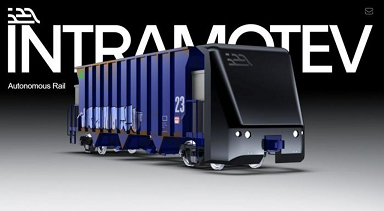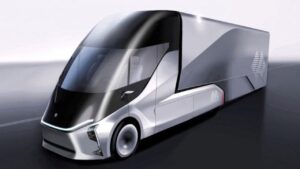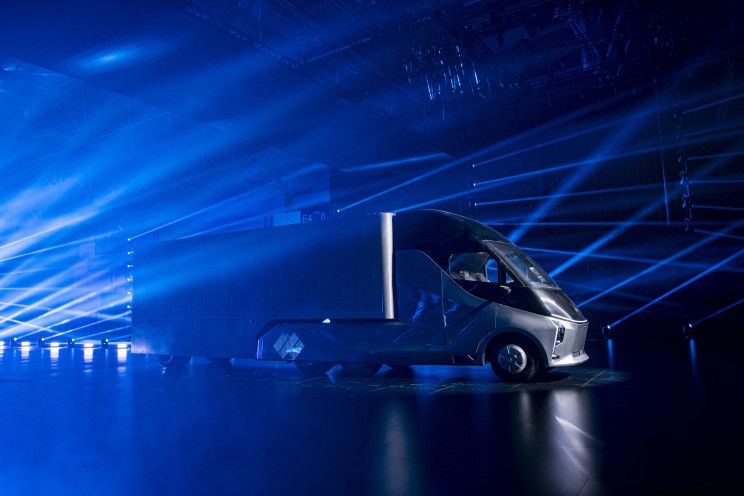Following air terminals, seaports are switching to smart technologies: AI, Big Data and video analytics systems.
In the fall of 2021, NtechLab, a developer of video analytics solutions, presented a project to equip the Vladivostok Commercial Sea Port with video analytics systems and recognition of various objects: people, objects, vehicles, as well as its integration with transport monitoring systems, labor safety monitoring and a single biometric base.
This is the first such smart port project in Russia: so far, similar developments are being used at industrial enterprises and airports. The project is currently at the roadmap development stage. The work of the Vladivostok Commercial Sea Port will be based on FindFace Multi, a multi-object platform from NtechLab that recognizes images and processes data about them online.
What is a smart port
A smart port is a fully automated seaport that uses artificial intelligence technologies, big data, blockchain, and the Internet of things. Combined within a centralized system, they help to monitor, collect and analyze data, optimize processes, and make prompt decisions. This improves productivity and safety, as well as environmental friendliness. Such technological solutions minimize possible errors due to the human factor.
How are smart ports today?
- The first full-fledged "smart" ports are already operating in China. One of them is the Ocean Gate container terminal in Xiamen, which can accommodate up to 200,000 tons of cargo. This is the first fully automated port terminal equipped with 5G. In the near future, the registration of foreign vessels will also take place automatically, online.
- The second smart port is located in Shenzhen. It is the fourth most important cargo port for the PRC, as the largest container ships pass through it. It also uses a fully automated smart platform that works thanks to 5G.
- The next port will be in Guangzhou. By 2025, they plan to create a unified intellectual system linking all the country's seaports. Cargo will be delivered using unmanned container ships.
- In Singapore and Malaysia, ports are using big data for screening systems, as well as determining the type and history of movement of imported cargo. For example, the IBM Traffic Prediction platform in Singapore helps predict ship arrival times and peak hours to avoid congestion. It also plans to use drones and mobile applications to improve the efficiency of cargo handling and prevent marine accidents.
- The Port of Hamburg in Germany uses SmartPort Logistics cloud analytics to plan the best routes for ships based on their characteristics and predicted traffic. In the mobile application, port staff can see when cargo is expected to arrive, and truck drivers know when to unload.
- The port of Cartagena (Colombia) uses solutions from Cisco and IBM for analytics within the Internet of things system. This helps to predict failures in the operation of equipment, in time to carry out maintenance and replacement.
- The port of Rotterdam (Netherlands) has implemented a big data analytics system that tracks the entire logistics chain of freight containers.
What key tasks will the platform solve as part of the smart port system?
Online territory monitoring and access control
Many seaports are border points and strategic facilities, so the issue of security on their territory is particularly acute. Personnel and conventional video surveillance systems are not able to provide it 100%.
The second problem is related to the amount of data: the global shipping industry generates 100-120 million pieces of information daily from various sources. If they are processed in a single system, the efficiency of all processes increases by 5–10%.
The solution is "smart" access control systems with face recognition and / or biometrics. They allow you to instantly determine whether a person has the right to enter the territory of the port (or its specific zone) or cross the border and store data on all his movements.
Passenger traffic data analytics helps to optimize the routes of passenger ships in order to avoid congestion at the entrance to ports or at passport control.
Vessel traffic control
With the help of analytics systems, it is possible to monitor the movement of cargo ships online, compare and plan routes based on the weather forecast and port load. At the same time, information about the planned and real time of arrival (taking into account breakdowns and other delays) is available through the online service to port personnel, ship and cargo owners, and truck drivers.
This will help optimize unloading routes and schedules, as well as reduce fuel costs and costs due to downtime. Charterers, in turn, will be able to choose the most suitable vessel to minimize costs and risks. Such a system, in particular, is used by the Australian company RightShip and the national shipping company of Saudi Arabia Bahri.
Control and accounting of containers
According to a 2014 Windward report, less than 50% of ships correctly identify their next port of call, and 1% provide false IDs. This happens with containers too. Video analytics of the "smart" port is able to read the numbers of containers during loading and unloading, identify them and compare data in the accounting system. This allows you to track the entire path of the container and quickly find the missing one on any segment of the route.
According to PwC, the Port of Rotterdam, thanks to a single digital platform, reduced the number of errors in documents and the processing time of cargo transactions, avoiding the need to make 30 million calls and send 100 million emails annually. The Port of Hamburg has reduced operating costs by 75% thanks to a similar system.
Optimization of vehicle traffic
This is the next step in process optimization. Port infrastructure is often not designed for peak traffic: for example, some ports have only two one-way roads. All this leads to large queues of trucks and disruption of the schedule for the delivery of goods.
Intelligent systems help to automatically distribute the queue of trucks so that each truck arrives exactly at the time the container arrives and automatically receives a pass through the checkpoint. Such a solution was implemented in the Hansab project for a smart port in Tallinn.
Ensuring labor safety
According to Rostransnadzor, of all emergencies with Russian ships in 2020, 23% occurred in ports, and, according to some analysts, up to 90% of all marine accidents are caused by the human factor.
Before leaving for a shift, each port employee undergoes a medical examination and is required to use protective equipment throughout the working day. However, during a physical examination, doctors miss important details, or simply turn a blind eye to them: for example, signs of a cold or traces of alcohol in the blood.
The video analytics system helps to automate the inspection in strict accordance with the specified parameters, preventing violations and speeding up the procedure by 5–6 times. Throughout the shift, "smart" cameras make sure that the staff wear helmets, masks and other protective equipment.
Similar systems are already used at the enterprises of Rusal and Norilsk Nickel. There are also domestic solutions for mining companies and drivers.
Analysis of incidents in the customs zone
Almost every time an incoming ship is unloaded, several containers are sent to the customs inspection area for a detailed check of the contents. To inspect the cargo, you need to contact the owners and wait for their arrival. All this, including the check itself, takes up to 6 days, and all this time the container remains open. It is at this stage that the theft of small-sized goods most often occurs: for example, smartphones, laptops or elite alcohol.
With the help of online monitoring and analytics systems, you can instantly track such incidents using video recordings, identify the violator according to the shift schedule, and notify the security service.
Control and analysis of traffic accidents
На территории порта нет заграждений или других ограничительных объектов, которые не позволят, например, легковой машине случайно свернуть в сектор разгрузки контейнеров. Зоны определены линиями на бетонном покрытии, которые не так легко заметить, а тысячи сотрудников и посетителей перемещаются между движущимся транспортом в отсутствие тротуаров. Как результат — высокий риск несчастных случаев.
Video analytics systems are able to identify people, vehicles and special equipment, promptly reporting potential danger. For example, when a truck is driving to the wrong berth, a passenger car is in the loading area, or pedestrians are in their path.
The future of smart ports
- Using big data to reduce the cost of chartering ships, tracking cargo and saving fuel.
- Consolidation of systems of seaports, shipowners and cargo owners with distributed online access to track ships, containers and freight transport.
- Application of video analytics and big data to track smuggling and other illegal schemes in the field of cargo delivery. A similar system is being developed, for example, by the Israeli startup Windward.
- Using the latest technology to prevent cyber threats. The IT infrastructure of seaports is very vulnerable, as it is of great interest to fraudsters and those who are interested in stealing and smuggling commercial cargo. Analytics systems help to detect vulnerabilities and suspicious activity in time, reporting this to the IT security service.
- Creation of new jobs for highly qualified specialists.
Startup Intramotev has developed an autonomous rail freight car with a range of up to 960 km

Tech startup Intramotev has developed an autonomous freight car that can be used in standard rail transport. The vehicle, called the TugVolt, is designed for short-haul routes up to 960 km and is equipped with standard clutches and air brakes.
TugVolt uses battery-electric distributed propulsion systems. Charging time with fast chargers is 15-30 minutes. The target Gross Rail Load meets the industry standard. The device is equipped with pneumatic brakes and a standard clutch.
“Currently, two configurations are available: for working with flat cars and hopper cars. We are currently in discussions with potential users who would be interested in closed body and tank car configurations,” said Intramotev co-founder and CEO Timothy Luchini.
It is assumed that the first applications for the use of innovative wagons may come from enterprises such as mines and mining and processing enterprises that need to transport goods over short distances.
Pininfarina Shanghai develops Xingtu autonomous electric truck with voice assistant

Automobili Pininfarina has unveiled a new design of the Xingtu all-electric autonomous heavy-duty truck. The vehicle has been designed to increase the efficiency of cargo transportation and increase environmental sustainability, while providing truckers with a convenient “second home”. The Xingtu truck is equipped with 11 on-board cameras, a LIDAR sensor, an infrared detector and 5 millimeter wave radars. All this allows the car to detect obstacles at a distance of up to 1 km.
“Heavy trucks are rapidly evolving to adapt to a changing environment where new technologies enable smart and connected vehicles to safely perform everyday tasks. The refined design of the new truck represents an advanced approach in which efficiency and aerodynamics work together to create an iconic exterior shape,” said Matteo Piguzzi, head of design at Pininfarina Shanghai.


The new truck uses the DeepWay Intelligent System (HIS), based on Baidu's autonomous driving technology. The system takes 100 milliseconds to perform a function based on data from on-board cameras and sensors. The Xingtu truck is equipped with a 450 kWh battery that provides a range of approximately 300 km. The battery itself can be replaced in as little as six minutes for rapid redeployment, and can be fully charged in one hour.
The heavy truck's aerodynamic look makes the most of Pininfarina's design DNA. Its streamlined design provides a wind resistance coefficient of just 0.35, which reduces the vehicle's overall energy consumption.
The interior has been designed to provide long-haul drivers with a comfortable and intelligent experience, with a large touchscreen infotainment system, large ultra-comfortable seat and intelligent voice assistant.
